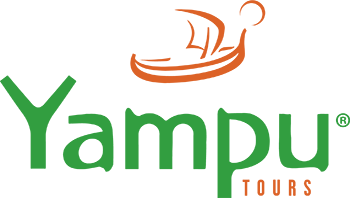Larco Herrera: A magical ride through Ancient Peru
Larco Herrera Museum offers an amazing overview of Peru’s remarkable history through its variety of ceramic vessels, textiles, gold and silver ornaments.
The museum was originally a house that Jose Larco Hoyle bought to transform it into a museum in homage of his beloved father, Jose Larco Herrera. This house is a beautiful colonial building located in a unique vice-royal mansion of the 18th century style. The house was built over a 7th century pre-Columbian pyramid; sadly this pyramid is no longer visible to the public. The Larco Museum might seem smaller compared with other museums in Lima, and around the world but it holds thousands of years of Pre-Columbian history. The museum has helped people from around the globe have a better understanding of ancient Peru.
This museum can go unnoticed from the outside, but once you pass the big gray metal gates and start going up the ramp, you will be mesmerized by the beauty of its gardens. The delightful and colorful orchids and bougainvillea are always in bloom. Since the Larco Herrera Museum is located in Peru’s capital city, with only few green areas, so it is very refreshing to see such pretty garden.
Once on the top of the ramp, then right and you will find the front desk next to the main patio, here the very hospitable staff will take care of you. If you prefer to take the tour on your own, there is a big LCD TV with an introduction to the museum, Pre-Columbian cultures originated in the Peruvian coast, and relevant information about Rafael Larco Hoyle and the formation of his vast archeological collection. There is also a business center with three high speed computers that are complimentary for guests.
Inside the museum you can appreciate the different styles each ancient culture had, such as colors, shapes, figures, and representations. You will learn what made them unique, but also how, throughout time, all these cultures influenced each other and eventually learned to combine their styles.
The first fact I realized was the division these cultures had between worlds. They recognized three different worlds: the upper world, where the gods live represented by birds; the earthly world, where humans live represented by felines, and the lower world inhabited by the dead and represented by serpents. After learning this, you will understand why most of the pottery is decorated with these representations, and how important these figures were for daily activities.
This museum is one of the few that let visitors take a look into the storage room with more than thirty-five thousand pottery pieces. The most surprising are the sculptures showing the illnesses of the time, such as chicken pox and harelip. Another theme that caught my attention was the fact that these cultures had a quality control and not all of the vessels were approved, so there is a shelf in the storage room with all the faulted pieces that ancient Peruvian discarded for its poor quality.
When the tour is almost over, you will be surprised to go into the other side of the property. There you will find the erotic ceramics collection that Mr. Larco specifically located in a different gallery so underage visitors wouldn’t be able to view. It is a small collection, but the sculptures are so “didactic” that no one in the room could resist laughing or blushing. These cultures considered intercourse as sacred rituals, necessary to maintain order in the world and prevent natural disasters; that is why they were so opened about sexuality, and representing the act in their quotidian art.
Pre-Columbian cultures, as an agricultural society, worshiped the forces of nature. As a sign of gratitude and veneration of the “Pachamama” or Mother Earth, they also practiced human sacrifices (besides sexual rituals). The Sacrifice Ceremony Gallery tells the story of these fascinating rituals through objects, such as half moon shaped knifes or “tumis”, wooden clubs, ceremonial cups, and vessels that illustrate the harshness, yet the splendor of the era.
There is also a restaurant inside the museum, where travellers can delight their palate with delicious Peruvian and International cuisine. Here taste Peru’s exquisite National drink, Pisco Sour. The restaurant has a very nice terrace with garden views, and a friendly staff.
At the end of my tour I had a bonus and got to see and pet a Peruvian dog that was hanging out with his owner around the gardens; all of us congregated to play with him. Peruvian dogs have a really warm body, and they are known for their therapeutic properties.
This was a great experience; there is a lot to understand about the evolution of pre-Hispanic Peruvian culture, and the Larco Museum sums it up very nicely. Mr. Larco left an incredible archaeological heritage for the world to admire and worship.
Tags:
